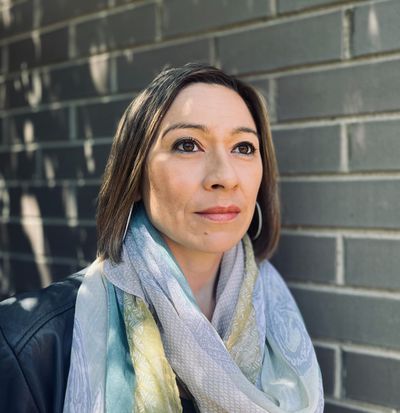Our extraordinary community engagement and programming manager Chris Gordon asks beloved local author Melanie Cheng about her beautiful, heartbreaking new novel, The Burrow.
CG: The Burrow is set during Covid times in Melbourne. How important to you was recording this particular moment of Melbourne lockdown history? The unfinished house improvements and diminished public contact particularly resonated with me.
MC: I didn’t set out to write a book set during the pandemic. I knew publishers were wary of pandemic books and (still feeling traumatised by the experience myself) I wasn’t all that keen to go there. Having said that, I started writing The Burrow in 2022, when we were already two years into the pandemic and, while things were improving, there was still no clear end in sight. It seemed wrong, almost deceitful, to write a contemporary story that didn’t incorporate it in some way. Now that the book is written, I can see that the uncertainty and the fear and the claustrophobia of that time ties in beautifully with the themes of the novel. An online reviewer of The Burrow commented that the pandemic setting felt both central and peripheral to the story and I love that. There are so many other examples of wonderful books set during the pandemic: Lucy by the Sea by Elizabeth Strout, August Blue by Deborah Levy, and The Sitter by Angela O’Keefe. As hard as it is to believe now, one day we and future generations will want to remember and understand what 2020 felt like. These pieces of art will provide an important record of a challenging and significant time.
CG: Your novel deals with heart-wrenching loss and grief. Was that where the story started for you?
MC: We can’t read the news without coming across some tale of impossible tragedy. Depending on our mood at the time, we may skim across the story and barely give it another thought, or we may dwell upon it for a moment, feeling empathy for the people involved. Occasionally a story will haunt me, particularly one that involves a sudden accidental death, or the loss of a child. I find myself wondering about the family – what are they doing in their grief? Are they blaming themselves? Are they blaming each other? What does their daily life actually look like? In The Burrow I wanted to explore how a family can forge a life together after such a loss. Is it possible to live a life that is both mindful of the fragility of human existence and also receptive to moments of joy and wonder? That was the question I wanted to answer.

CG: Writing about three generations of females living under one roof allowed each character to reflect how their own grief impacts the others. How difficult was it to have those separate voices running through the novel?
MC: My writing apprenticeship began with short stories and so I’m accustomed to jumping in and out of different characters’ heads – in fact I rather love it! I didn’t stop to count how many voices there were in my short story collection, Australia Day, but there were quite a few. Even my first novel, Room for a Stranger, was told through the alternating perspectives of two extremely different characters. For me, part of the excitement of writing is examining a particular situation from a multitude of perspectives. I love reading novels that offer that experience too. The Slap and The Bee Sting immediately come to mind. Having said that, it can be difficult to create distinctive voices. You need to have intimate knowledge of a lot of characters. In The Burrow, there is a little bit of me in all four members of the Lee household: like Amy, I am a mother and writer; like Jin, I’m a doctor with Chinese heritage; and like Lucie, I was once a fearful and introverted 10-year-old. Perhaps the character least like me is Pauline, but then she could be the woman I’m growing into!
CG: The pet rabbit in the novel seems to eloquently juxtapose the central themes of the novel. (So clever.) Why a rabbit though? Why not another domestic pet?
MC: Well, the simple answer is that my own family adopted a mini-lop rabbit in 2020 so I had a wealth of knowledge and experience about bunnies to share. But it was more than that. Rabbits are prey animals. They are watchful and hypervigilant – a little like we were during the pandemic. They are also harder to read than dogs and cats – they don’t wag their tails or purr – and I thought this unknowable and unreadable quality provided a great mirror to the human beings in the book, all of whom are keeping secrets from one another.
CG: I am particularly enamoured with your ability to write this domestic story using simple and accessible language. Was that on purpose? Are there other writers you admire who use this approach?
MC: Again, I attribute this to my training in writing short stories. Writing to a word count has made me a merciless editor. A word has to lift its weight or it gets cut, even if I love it. I remember Jason Steger commenting that there were no bells or whistles in my writing – I hope he meant it as a compliment because I certainly took it as one! And yes, I do take my cues from other writers I admire. I love the tight, spare prose of Helen Garner’s The Children’s Bach, and I already mentioned Elizabeth Strout. Kent Haruf’s Our Souls at Night is another favourite. I love nothing more than a short, spare novel with restrained but emotionally weighty prose. I hope I have delivered!


